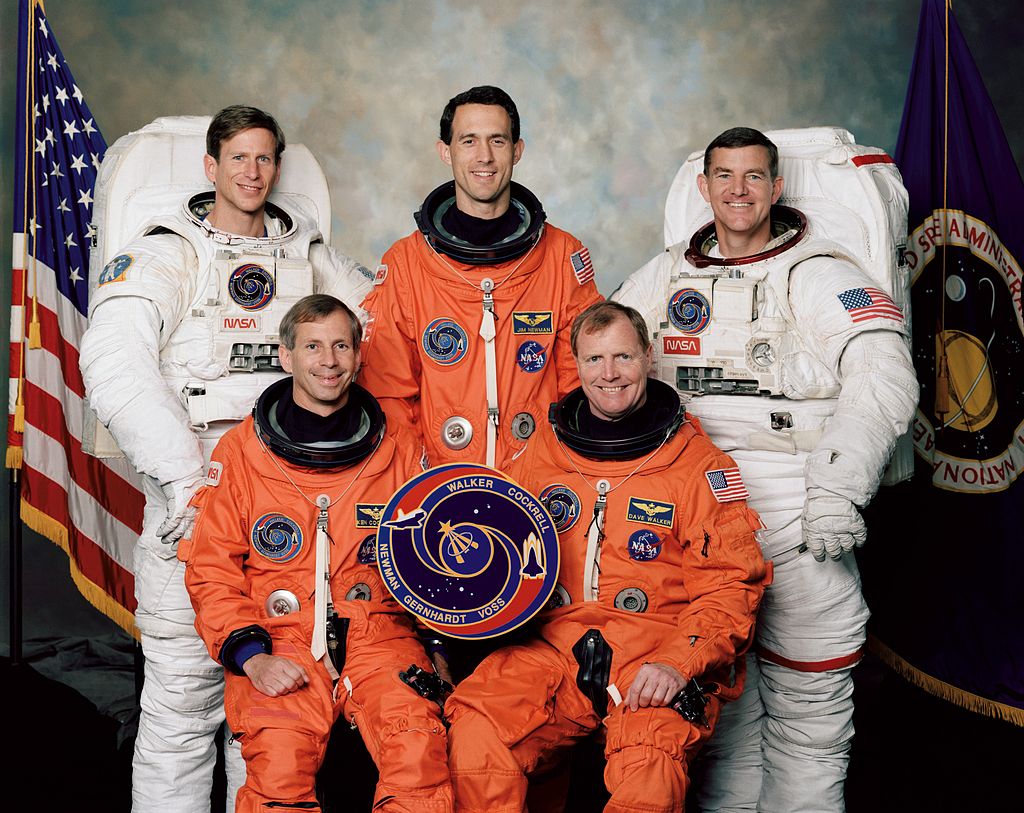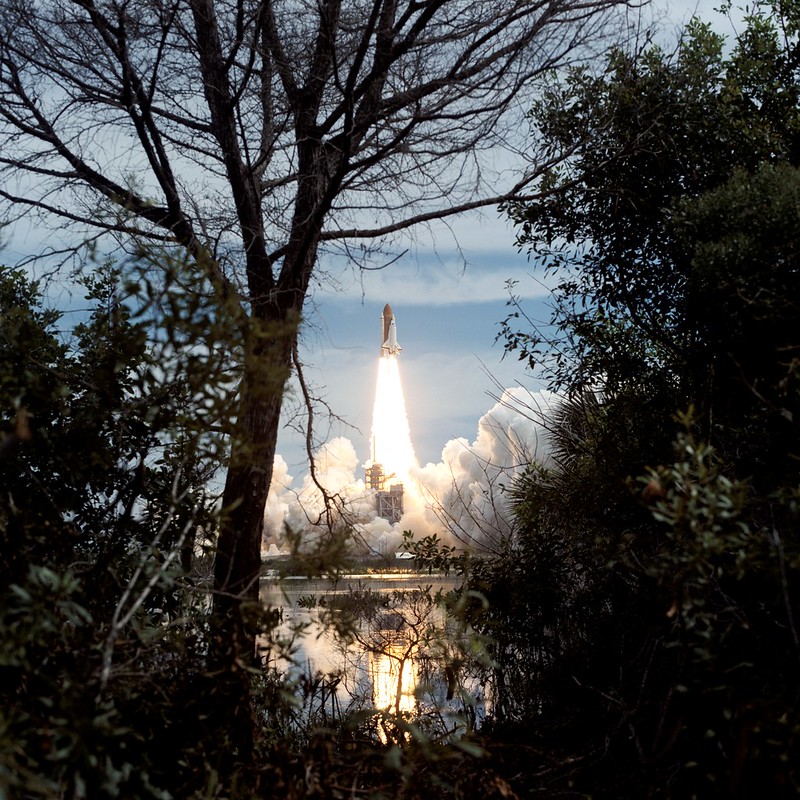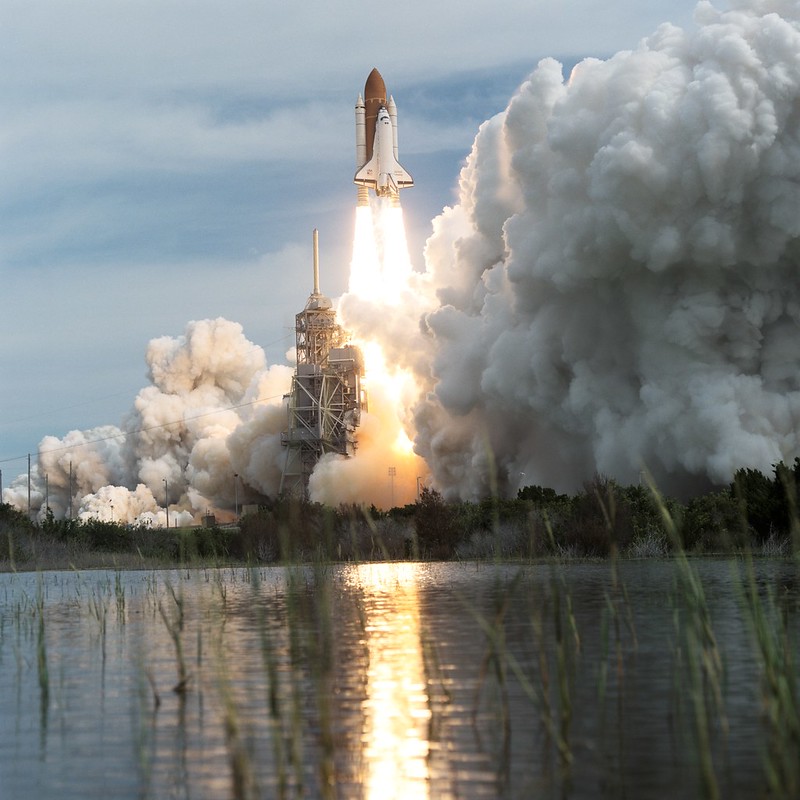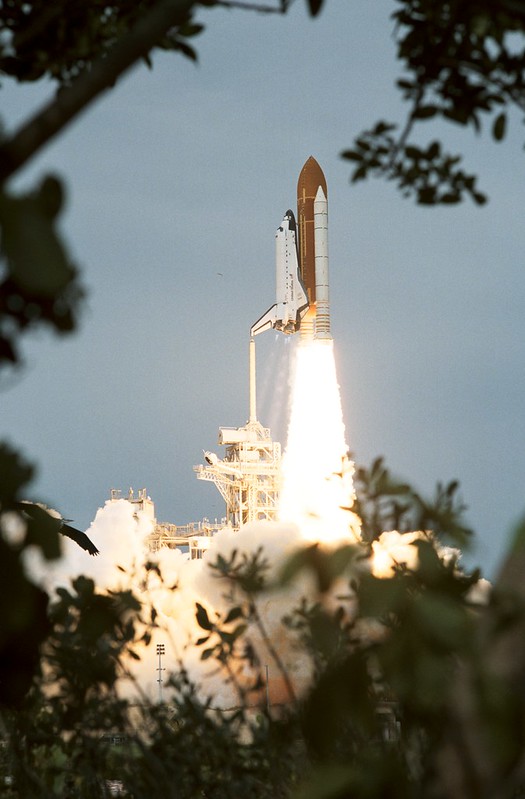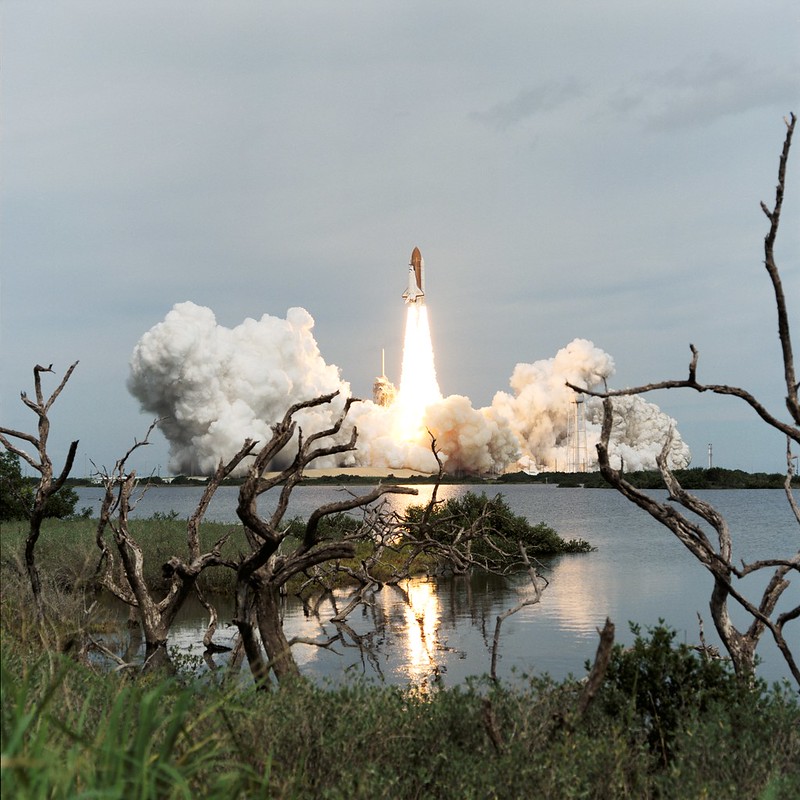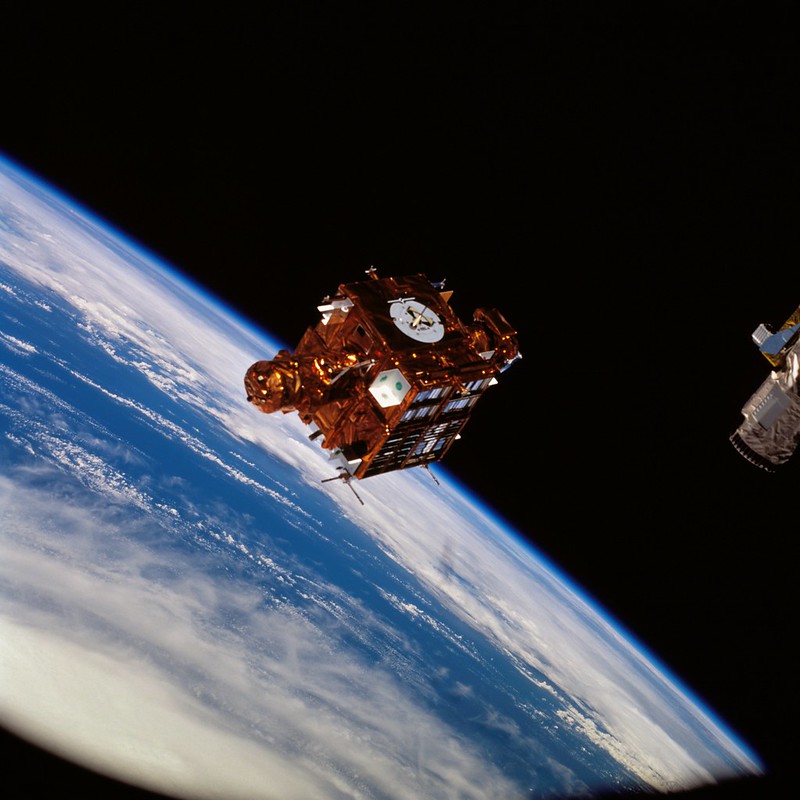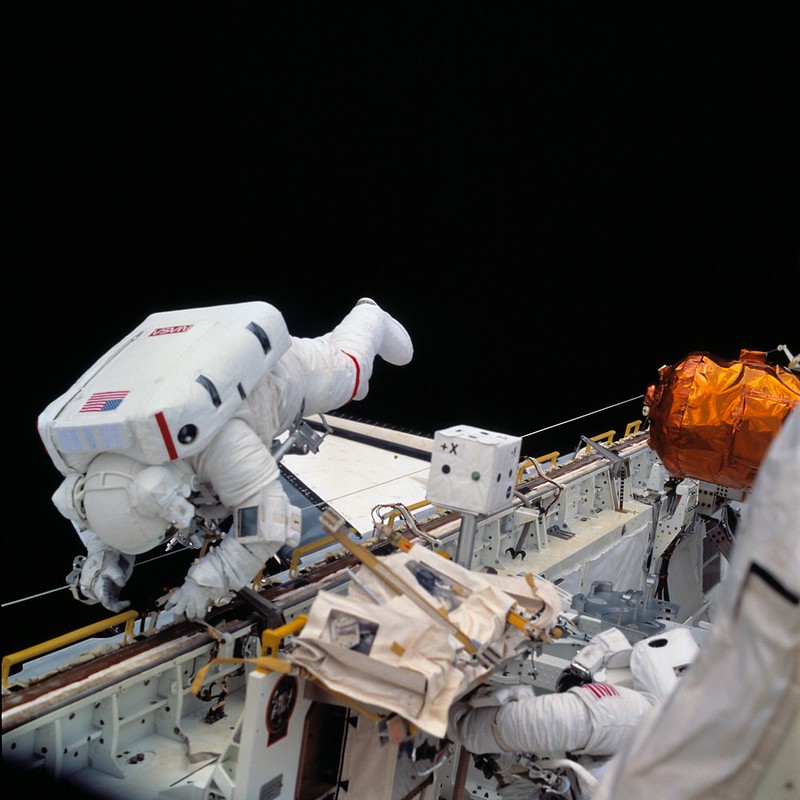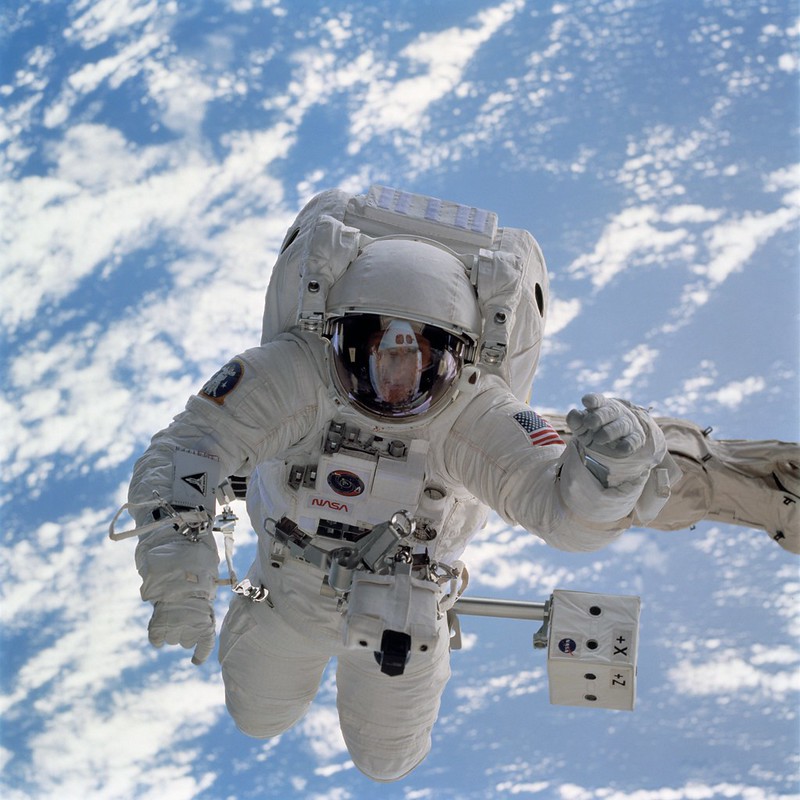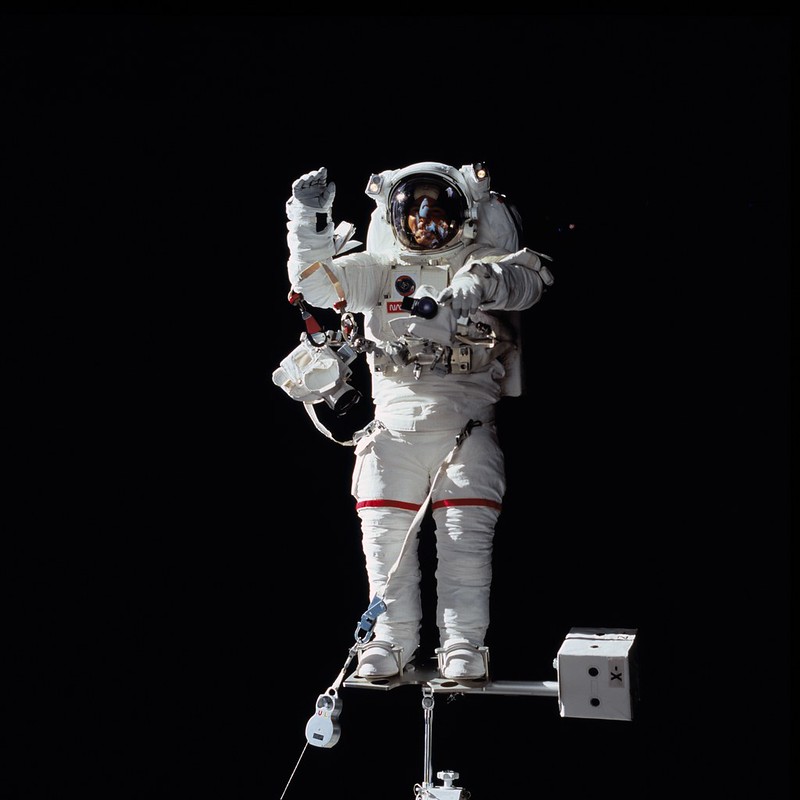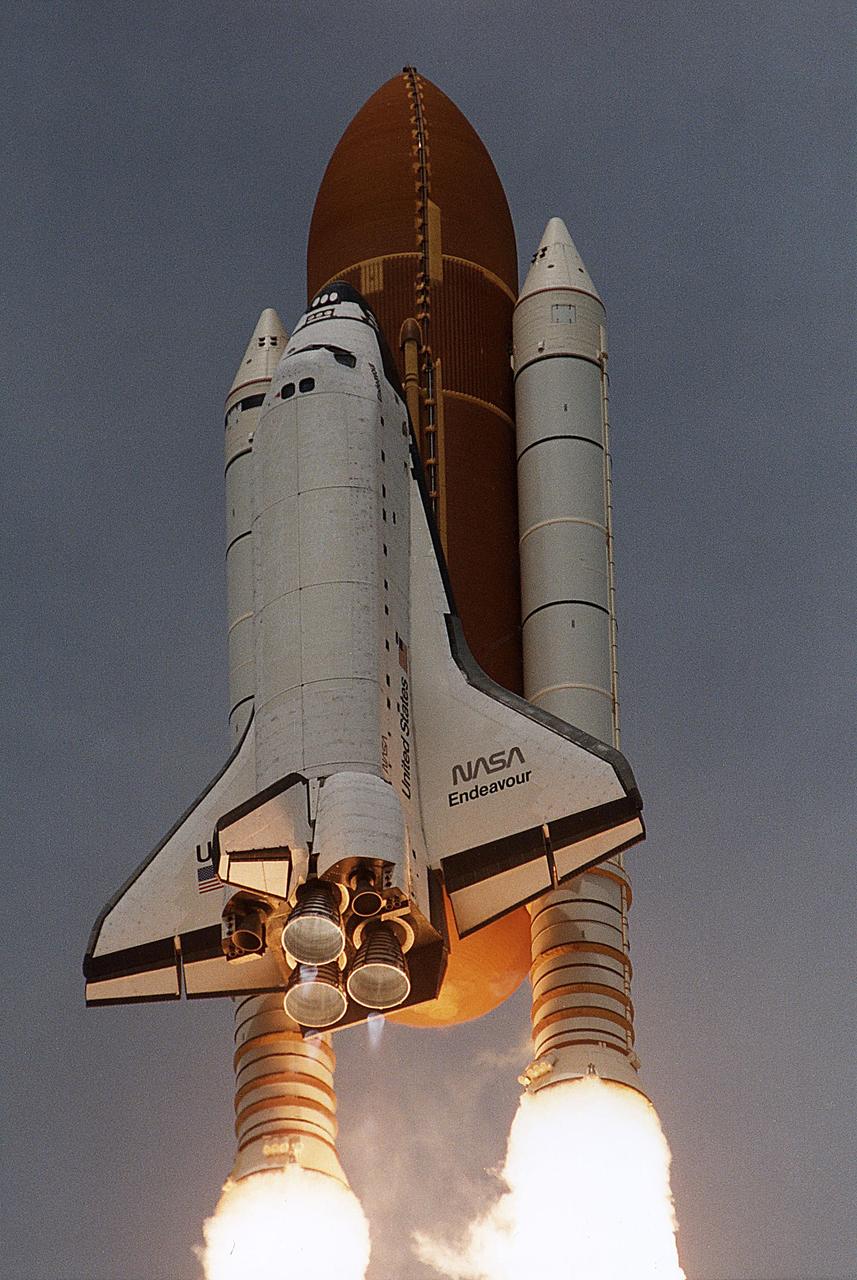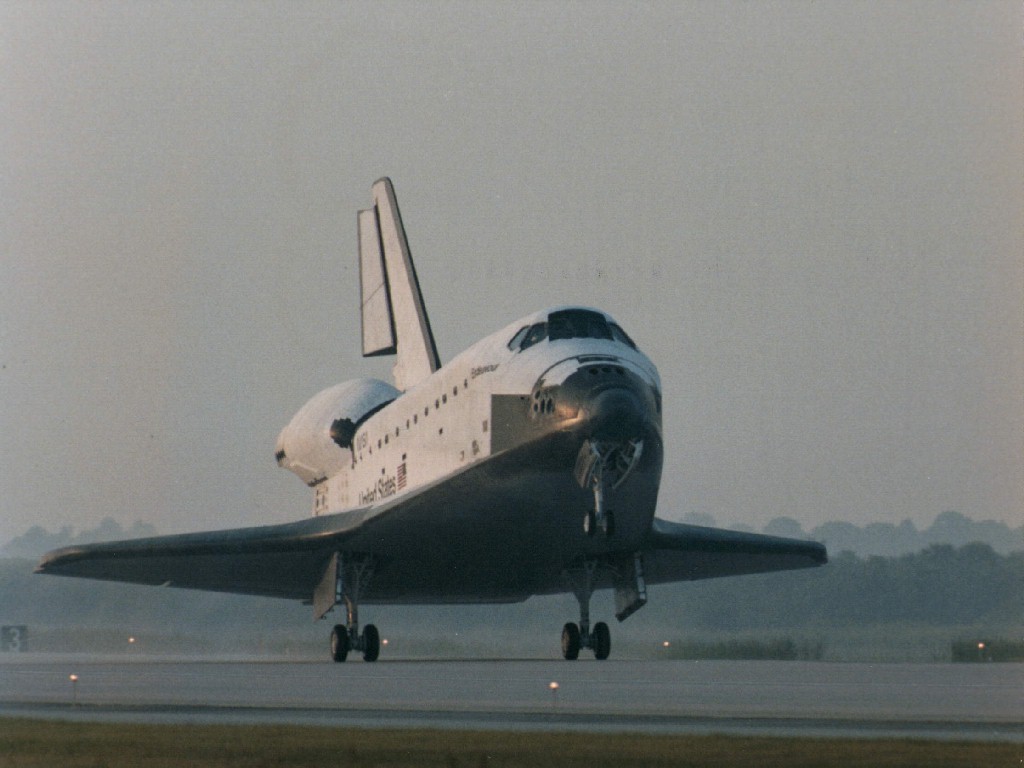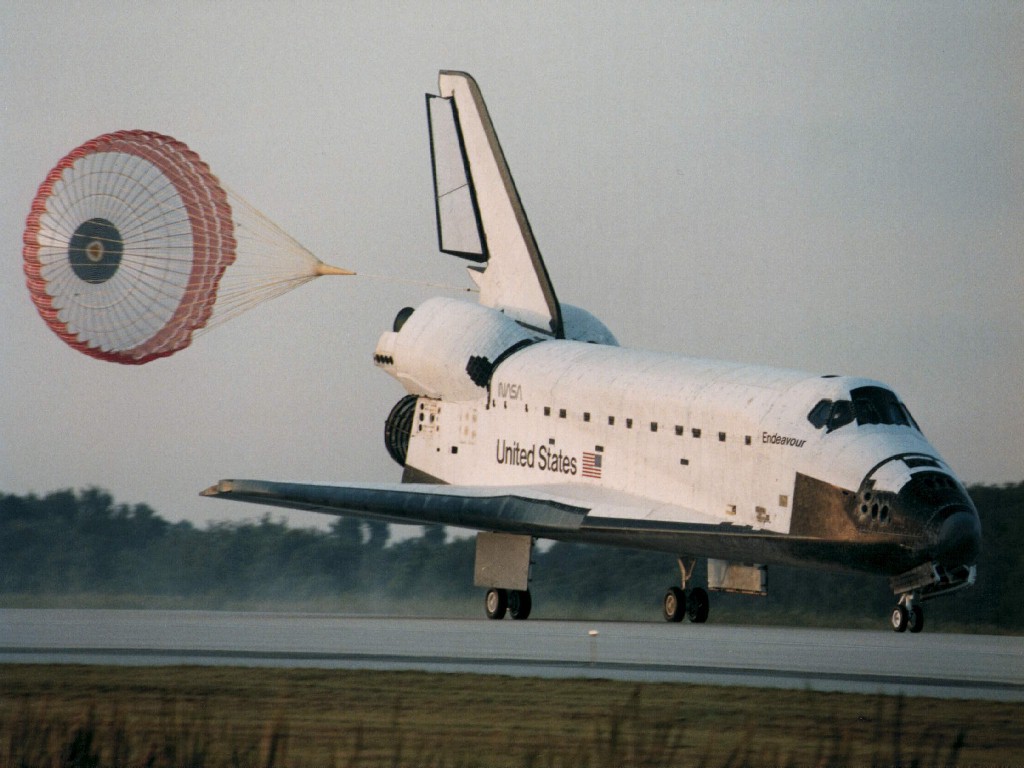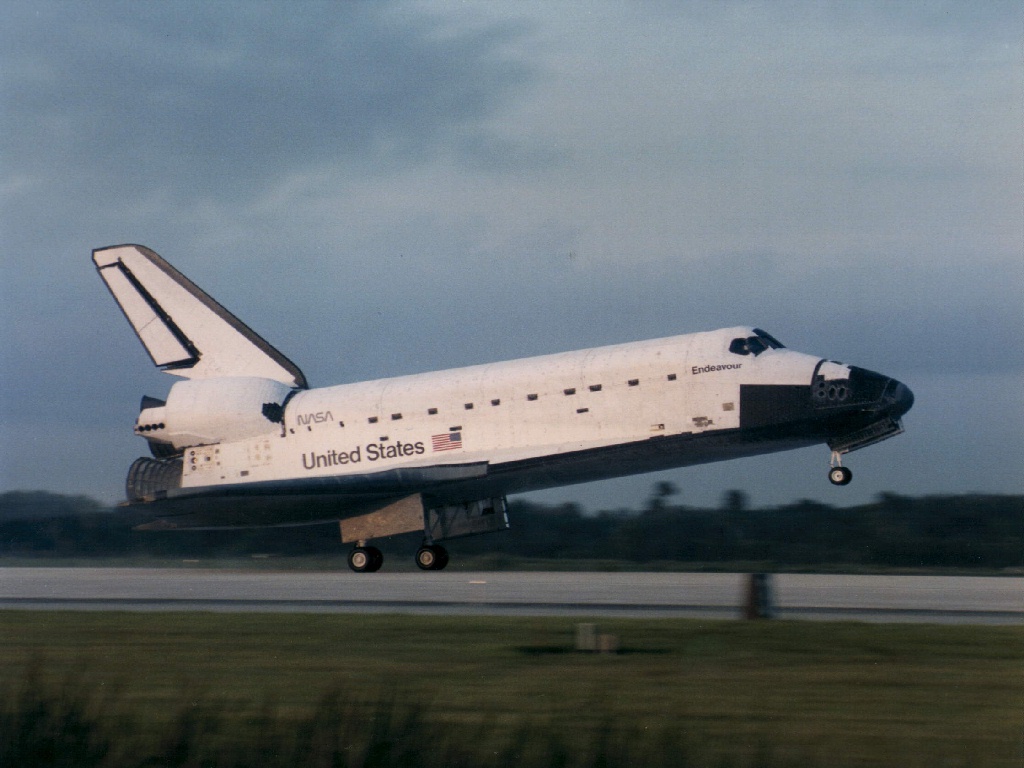STS-69 Fact Sheet
By Cliff Lethbridge

STS-69 — Endeavour
71st Space Shuttle Mission
9th Flight of Endeavour
Crew:
David M. Walker, Commander
Kenneth D. Cockrell, Pilot
James S. Voss, Payload Commander
Michael L. Gernhardt, Mission Specialist
James H. Newman, Mission Specialist
Orbiter Preparations:
Tow to Orbiter Processing Facility – March 28, 1995
Rollover to Vehicle Assembly Building – June 28, 1995
Rollout to Launch Pad 39A – July 6, 1995
Rollback to Vehicle Assembly Building – August 1, 1995
Rollout to Launch Pad 39A – August 8, 1995
Launch:
September 7, 1995 – 11:09:00 a.m. EDT. Endeavour was moved from the launch pad back to the Vehicle Assembly Building on August 1, 1995 and returned on August 8, 1995 in order to protect the orbiter from severe weather associated with Hurricane Erin. This move did not impact the launch date.
Launch was originally scheduled for August 31, 1995 but was scrubbed about 5.5 hours before liftoff due to the failure of one of the orbiter’s three fuel cells. Fuel Cell Number Two was removed and replaced. September 7 launch occurred as scheduled with no delays.
Landing:
September 18, 1995 – 7:37:56 a.m. EDT at Runway 33, Kennedy Space Center. Rollout distance was 10,230 feet. Rollout time was 56 seconds. Mission duration was 10 days, 20 hours, 28 minutes, 56 seconds. Landing occurred during the 171st orbit.
Mission Summary:
For the first time, two separate payloads were released and retrieved during a single flight.
The Spartan 201-03 spacecraft, featuring the Ultraviolet Coronal Spectrometer (UVCS) and White Light Coronograph (WLC) to study the sun was deployed and retrieved.
Following Spartan 201-03 recovery, the Wake Shield Facility-2 (WSF-2) was deployed and became the first spacecraft to maneuver itself away from the orbiter rather than the other way around. WSF-2 accomplished this by firing a small cold gas nitrogen thruster. WSF-2 generated an ultravacuum environment in which thin advanced electronic films were grown.
During retrieval operations, WSF-2 was used as a target for the Charging Hazards and Wake Studies (CHAWS) Air Force experiment to study the buildup of electrical fields around an orbiting space vehicle.
On September 16, 1995 astronauts Voss and Gernhardt performed a 6 hour, 46 minute spacewalk to evaluate improvements in spacesuit thermal protection and practice space station assembly techniques. This was the sole spacewalk of the mission.
Additional payloads included the International Extreme Ultraviolet Hitchhiker (IEH-1) and Solar Extreme Hitchhiker (SEH) to study ultraviolet flux coming from the sun. Consortium for Materials Development in Space Autonomous Payload (CONCAP IV-3) studied growth of organic optical crystals and thin films.
Shuttle GLO Experiment (GLO-3) studied the mysterious glowing shroud observed surrounding the orbiter during several flights. Ultraviolet Spectrograph Telescope for Astronomical Research (UVSTAR) pair of telescopes measured solar ultraviolet emissions to complement SEH observations.
Capillary Pumped Loop/Get Away Special Bridge Assembly (CAPL-2/GBA) contained six GAS experiments. In-cabin payloads included Space Tissue Loss/National Institutes of Health-Cells (STL-NIH-C), Commercial Generic Bioprocessing Apparatus-7 (CGBA), Biological Research in Canister (BRIC), Electrolysis Performance Improvement Concept Study (EPICS) and Commercial MDA ITA Experiments (CMIX-4).
SELECTED NASA PHOTOS FROM STS-69
